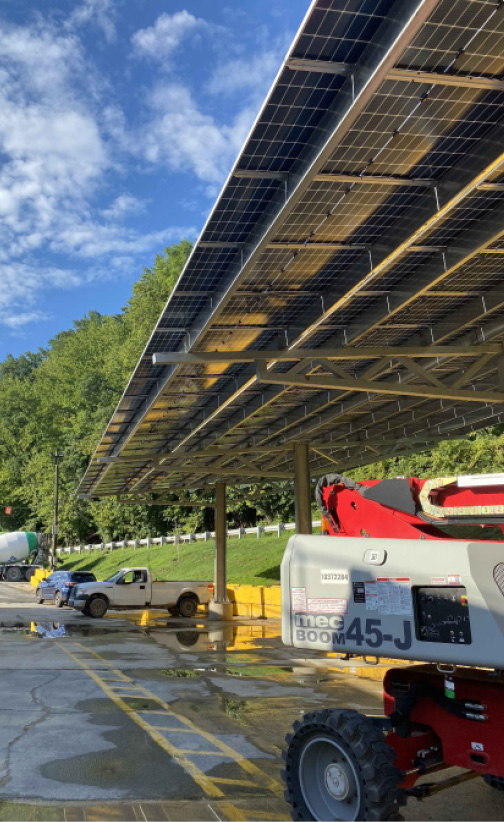
New solar panels at the Holcim US Fort Totten ready mixed plant will ease the Washington, D.C. industrial power load and advance the Chicago-based producer’s goal of running all concrete, cement and aggregate sites with renewable energy by 2030. The installation includes cementitious material silo rooftop and carport solar modules, combining to generate 1,300-1,500 MWh per year of green energy. It highlights a Holcim US commitment to move toward a blend of green solutions across business units and markets, from low-carbon cement and concrete, to electrifying vehicle fleets, to carbon capture research.
“This summer showed why everyone, including a concrete supplier in the middle of a large city, is responsible for reducing energy consumption,” says Holcim US Mid-Atlantic Region Senior Vice President Cedric Barthelemy. “With our focus on renewable energy, we’re leading the way in becoming the first concrete company in the District to generate and use solar power on site.”
Centennial Generating Co. developed and solar engineering contractor Halo executed the Holcim US Fort Totten arrays, to be owned and operated by Madison Energy Investments. The District of Columbia solar power infrastructure follows other renewable energy projects at Holcim US facilities in Colorado, Michigan, New York and Texas. The producer is on pace to close 2023 with solar or wind energy sources powering up to 40 percent of its concrete, cement and aggregate operations.

ROGERS GROUP ARRAY
New solar power infrastructure on a Batavia, Ohio parcel will yield more than one-third of the electricity typically consumed in an adjacent quarry’s underground mining operations. Quarry owner Arch Materials is a subsidiary of environment-minded Rogers Group Inc., Nashville, the largest independent crushed stone operator in the U.S.
“The emphasis on solar farms in the aggregates industry is a game-changer for more sustainable mining practices,” observes Rogers Group Vice President Brian Dillard. “This project utilizes land not currently in use by the mine to offset the location’s energy consumption.”